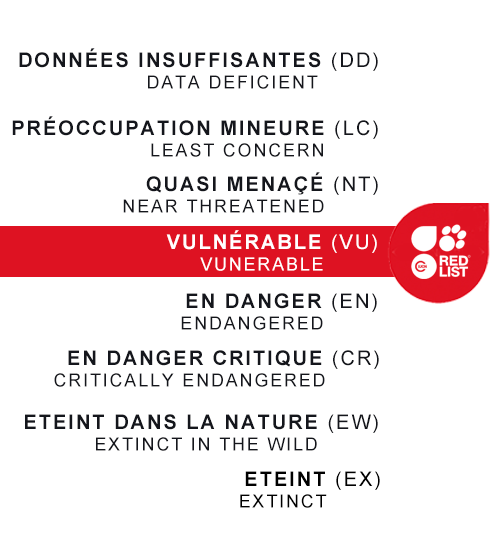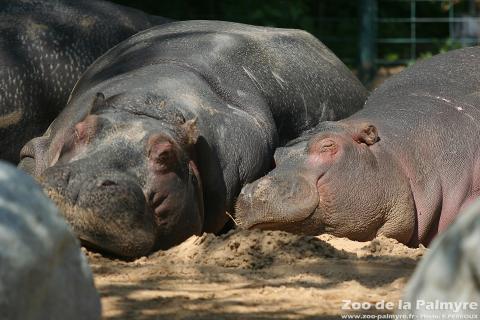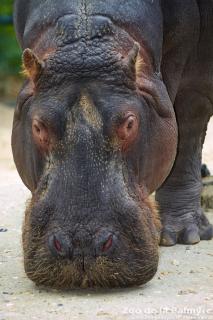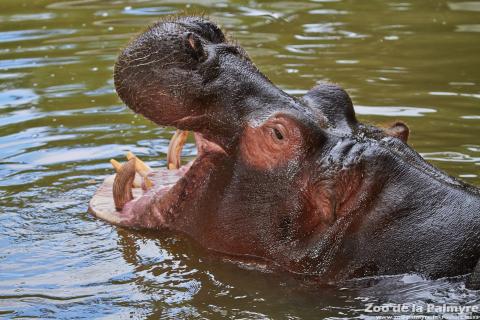Hippopotamus

Hippopotamus

-
Class
Mammalia -
Order
Artiodactyla -
Familly
Hippopotamidae
-
 2.9-5m
2.9-5m -
 up to 2 tonnes for ♀ and 4.5 tonnes for ♂
up to 2 tonnes for ♀ and 4.5 tonnes for ♂ -
 8 months
8 months -
 1
1 -
 35–50 years
35–50 years
-
Diet
herbivorous -
Habitat
rivers, lakes, swamps -
Range
Sub-Saharan Africa -
 This species is part of a European Breeding Program
This species is part of a European Breeding Program
-
Population in the wild
Stable -
IUCN REDLIST status


With their webbed feet and the sealing of their nostrils by muscular valves when they are submerged, hippos are fully adapted to life in the water and spend most of their time there, mainly to protect their skin from heat and dehydration. They only come out to graze or sunbathe. Mating and birth take place in the water. Females have a single pair of udders and breastfeeding often takes place underwater. The young can follow their mother on land after a few days and mother and calf rejoin the rest of the herd after about 2 weeks. While their mothers go off to feed, young hippos are looked after by other females.
Hippopotamuses are social and territorial animals, with group size depending on how much water is available.
The species is classed as vulnerable on the IUCN’s Red List. They are victims of the destruction of their habitat and of being killed for their meat or because they damage farmland. Since the international ban on the trade in elephant tusks, they have also been hunted for their ivory. West African populations are the most highly endangered.





